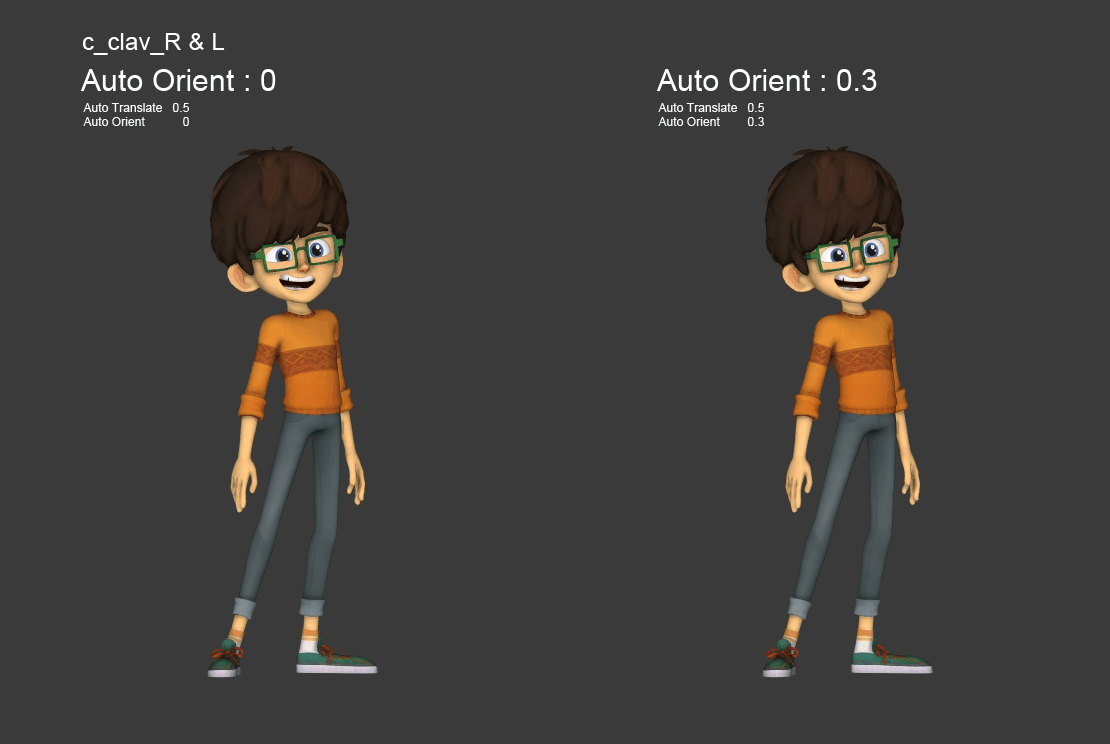Biped Controls
Context Menu (Right-Click)
Before reviewing each controller, note that a context menu (right-click) provides quick access to all rig features.
It includes options such as:
- Controller display levels
- Quick selection of controller groups
- Mirror or flip poses and animations
- Return to bind pose for part or all of the rig
- Pin hands and feet (to head, hips, or world) via space switches
- IK/FK switching for limbs
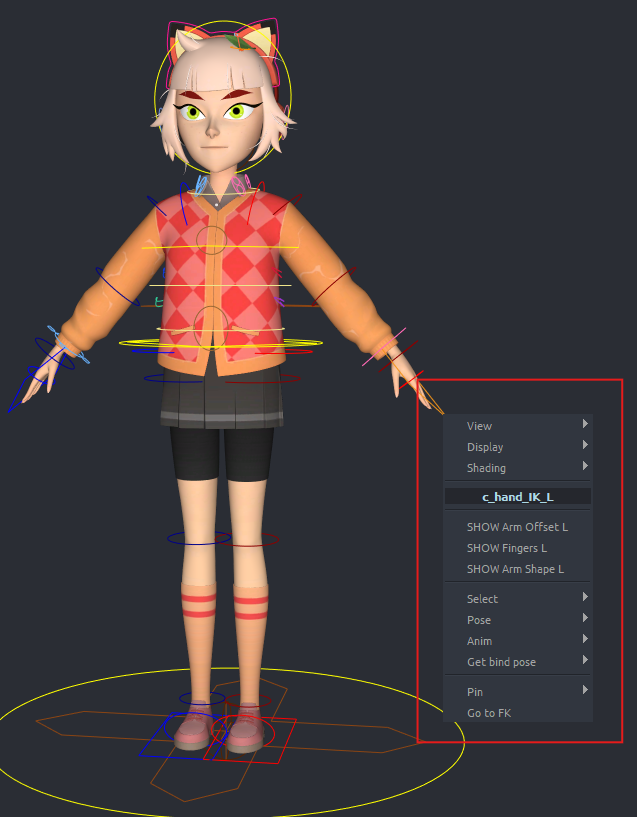
World Controls
The World Control is the main controller of your character.
- All other controllers are parented to it.
- Moving it moves the entire rig.
You use it to position, rotate, and scale the character in your scene.
It also includes a dedicated attribute: scale_offset.
This parameter is mainly used for scene-specific adjustments, such as when working on particular shots or sequences that require scale corrections.
This controller also hosts the visibility switches for the various modeling elements that make up your character.
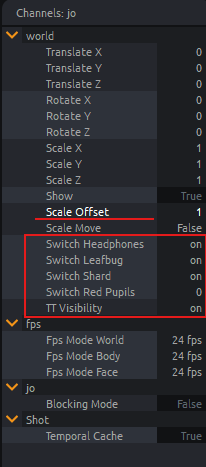
Under the World Control, you’ll find the following child controllers:
c_move: used to create global motion paths for the characterc_fly: functions likec_movebut with a pivot centered on the character’s center of gravityc_scale: used to scale the character, with attributes to enable or disable squash and to adjust the scale pivot
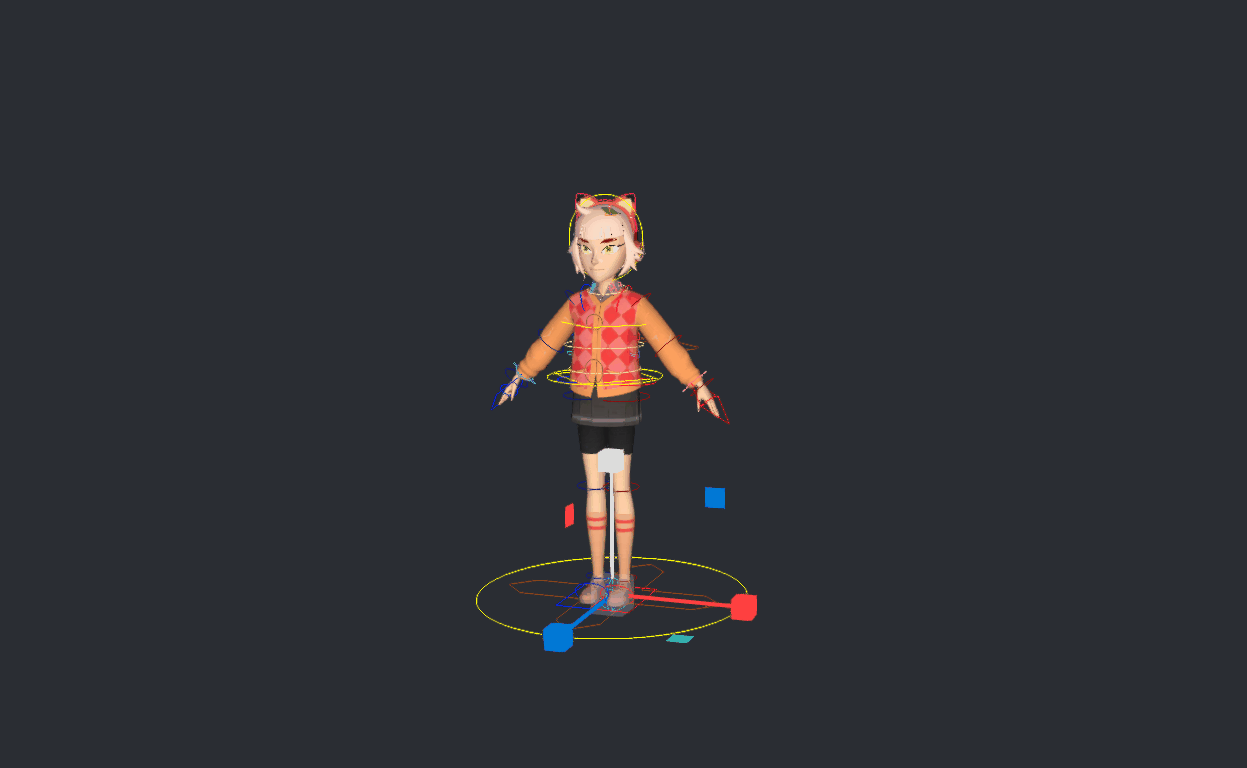
Spine Controls
The spine hierarchy is organized as follows:
- At the base of the spine:
c_cog(FK pelvis control). The entire upper body follows it. - Then:
c_spine_1andc_spine_2(FK hierarchy) - For IK:
c_pelvisIK: moves the pelvis independently from the upper bodyc_spineIK: moves the upper spine independently from the lower part
Each controller includes attributes to:
- enable
squashandstretch - adjust
slide(modifies joint positions to refine the silhouette)
These attributes are shared proxies and are the same across all controllers.
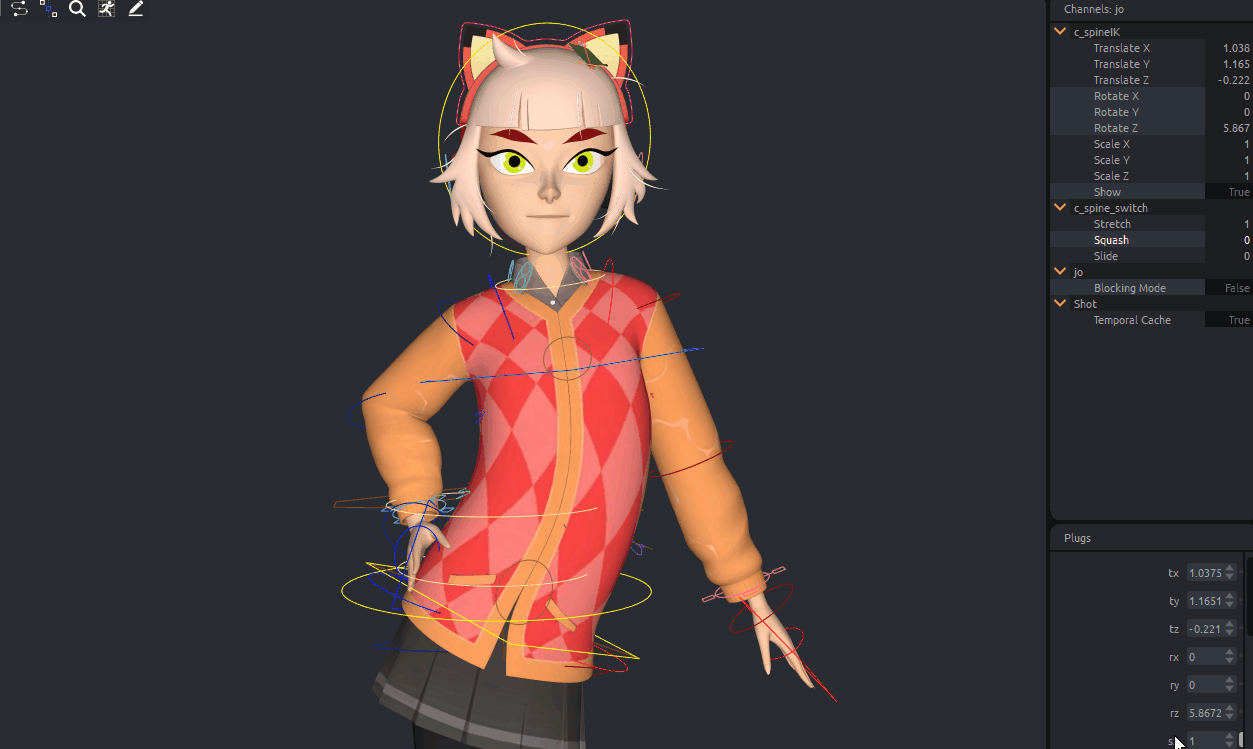
Right-click to reveal two extra controllers for fine-tuning the spine silhouette:
c_spineIK_mid: middle of the spine curvec_pelvis: pelvis joint only (without the spine)
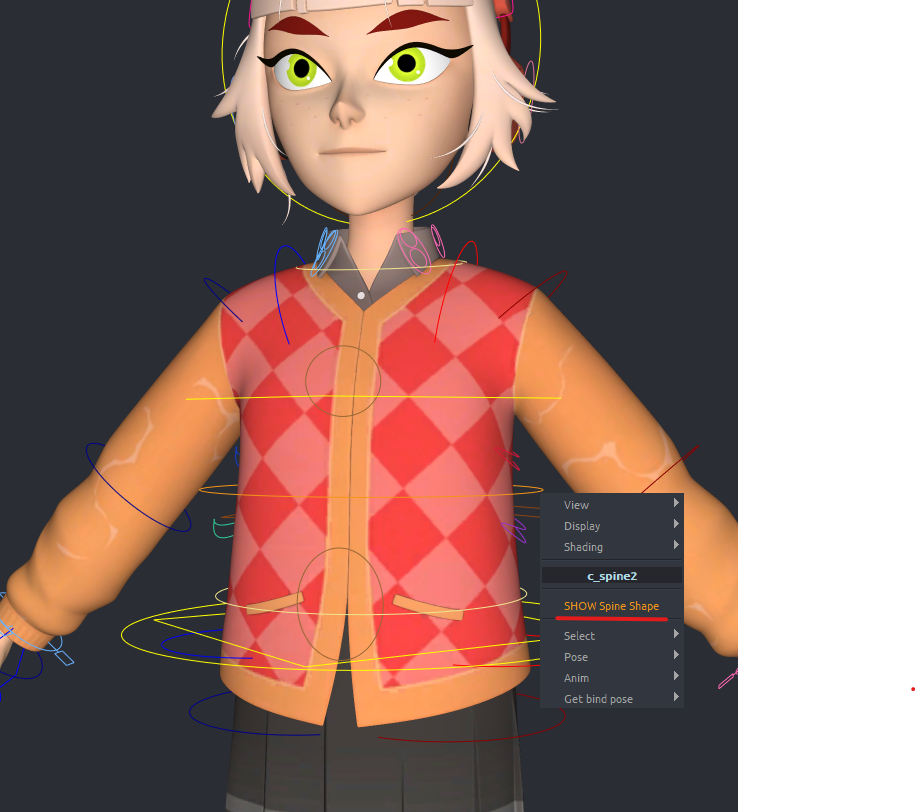
Neck and Head Controls
The neck and head controls are organized as follows:
c_neck: FK control at the base of the neckc_head: IK control for the head, drives translation, rotation, and scalec_head_scale: manages head squash and stretch
These controls also includes stretch, squash, and slide attributes, similar to the spine.
Right-click on c_head to reveal an intermediate controller c_neckIK_mid for finer silhouette control.
Arm and Leg Controls
Arms and legs share similar control structures:
- An IK control at the end of the limb (e.g.,
c_hand_IK_L), active by default - Pole vectors are computed automatically, but can be adjusted via the
twistattribute
Common Attributes (Arms & Legs)
- Enable
stretch/squash(shared proxy attributes, same as spine and head/neck) min_stretch: sets the minimum stretch valuesoft: smooth transition between normal and stretchedfollow/pin: space switch attributes, also accessible via right-clickarc/smooth: adjusts limb bendingfix_twist: improves twist deformations
👉 You can switch between IK and FK from the right-click menu.
You can also reveal extra silhouette controls for limbs, featuring attributes such as pin root, useful when animating elbows or knees resting on a surface.
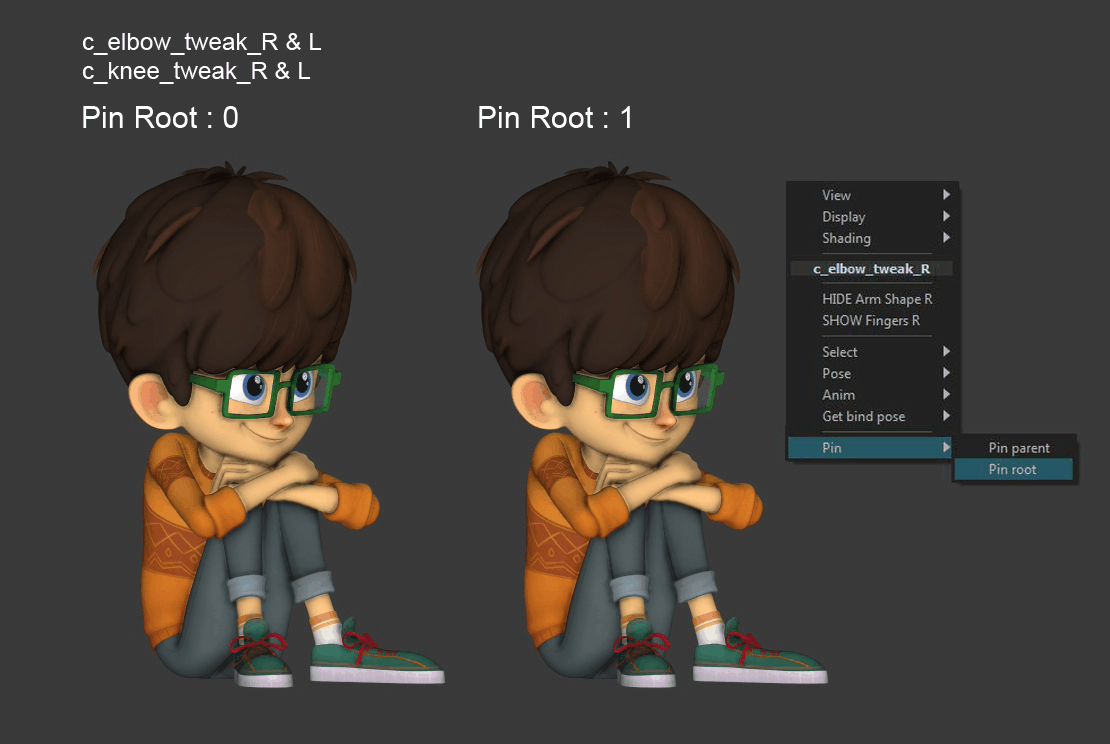
Leg-Specific Attributes
stomp: applies a local stretch and squash on the foot for impact animationsbank: tilts the foot sideways, useful for leaning or turning motionsfoot_roll: controls the rolling of the foot from heel to toe- Other roll/pivot attributes: manage the position and rotation of the reverse foot setup
Arm-Specific Features
- Ability to show finger controls via right-click on the hand IK control (hidden by default)
c_pinky_meta_L: used to progressively move all fingers, making it easy to create a cup gesture
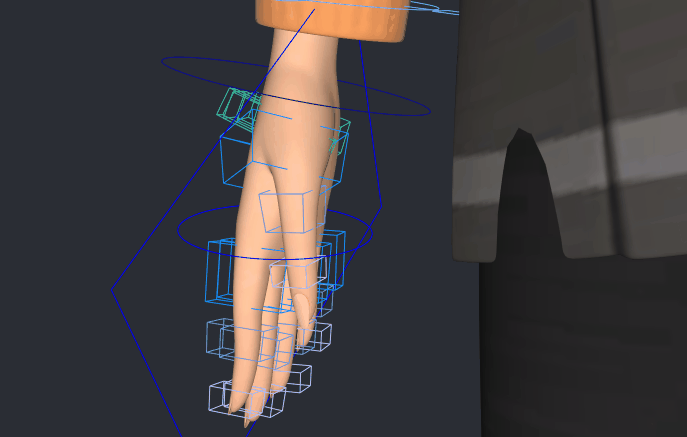
Clavicles
auto_rotate: automatically rotates the clavicle to follow the arm (not built by default)auto_translate: converts clavicle joint rotation into translation, which can help improve deformations, especially on cartoon-style characters
